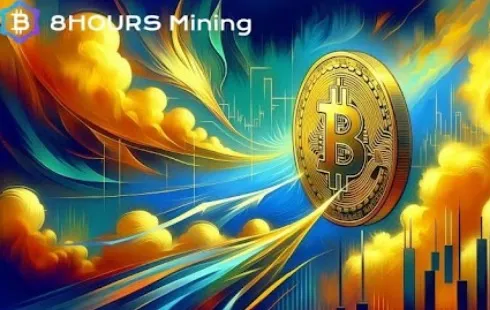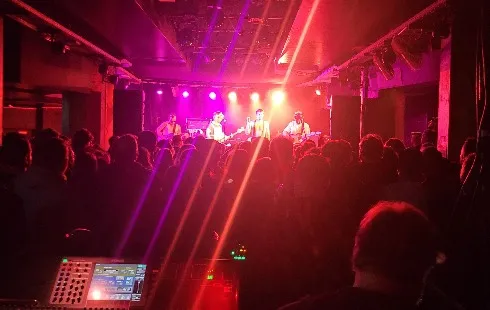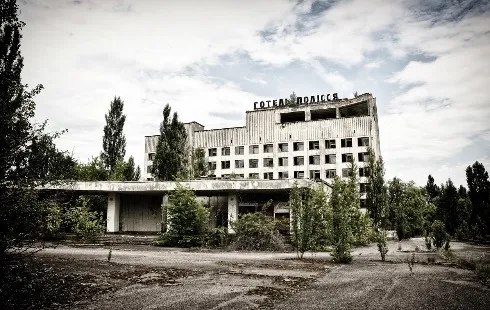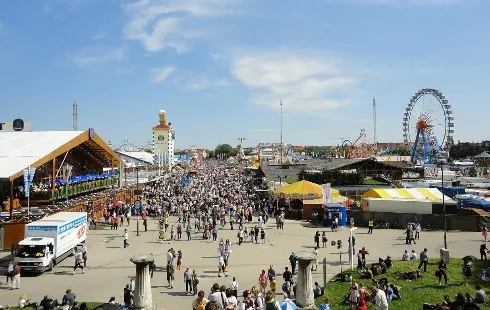
8HoursMining cloud mining platform, daily profits up to $9,337
Section: Business
Part IV - Ukraine's Golden Age and Troubles
"The history of my life is a part of the history of my homeland." -Taras Shevchenko
After the signing of the Agreement of Pereiaslav in 1654, the slow but inexorable amalgamation of Ukrainian remnants of the Kyivan Rus' along the Dnepr River began. The Muscovites, now known as Russians, continued their push south and west where they clashed with the very powerful Tartars who had the backing of the Ottoman Empire. The center of culture, language and national identity of what was later to become the Ukrainian state now shifted west, back to Galicia-Volhynia. Eastern Galicia was mostly Ukrainian, but western Galicia was mostly Polish. This would bode ill for both future countries in the years to come.
The Landscape of Europe is Changed Forever
At the start of the 19th century, around 80% of the Ukrainian population was under Russian control, and the other 20% was under a completely different system, that of the Austrian Habsburgs. So while those in the east felt the firm hand of Russia those in the west felt the gentler hand of Austria. During the rule of the Habsburgs, cities like Stanislav (now Ivano-Frankivsk), Kolomiya, and L'viv enjoyed their greatest age (all cities were mostly inhabited by Poles and Jews, Ukrainians remained mostly rural). The architecture of these cities best show the heavy influence of the Austrians. In L'viv, coffee shops similar to those in Vienna can be found frequently. The interiors are often ornate and could easily be confused with those of Schloß Schönbrunn, in Vienna. The staff wear outfits from the period, the tortes are done Viennese style and coffee mélange is the preferred drink. Even today in western Ukraine the Austrians are seen in a positive light. But this warm feeling for the Austrians (and Germans) the Ukrainians had in the 19th century would be another source of their seemingly endless troubles.
In 1848, the Spring of Nations and subsequent treaties and partitions would have a profound effect on Ukrainians. The Hungarians became equal partners with Austria and immediately began a program of magyarization in the Transcarpathia region (western Ukraine). The Poles began to dominate the newly created parliament in Vienna with respect to affairs of Galicia-Volhynia, and started to look for ways to reconstitute a new Poland based in Galicia-Volhynia. Shortly thereafter, a new foreign power, Romania, entered the Ukrainian landscape by claiming a part of southern Galicia, Bukovyna, as part of a greater Romania. Moldova (formerly Bessarabia), just east of Chernivtsi, Ukraine, and an independent country today (part of which Russian troops continue to occupy in 2012), still speaks Romanian. The Russians controlled Kyiv and its surroundings, the Donbas region and everything except Crimea, which was held by the Turks. So it remained until the start of the First World War.
Ukraine begins to exhibit stirrings of Nationalism, through its language
In the few decades before 1848, in much of the area which was to constitute modern Ukraine, Ukrainian was being used beyond the vulgar of the peasants and was beginning to be used in art such as poetry and opera. The one person who is most responsible for this is Taras Shevchenko, known as the 'bard of Ukraine'. His use of Ukrainian (he is known as the father of the modern Ukrainian language) showed the people that Ukrainian could be used to express all the feelings and emotions of the people, as well as the everyday things around them. Nearly every town of any considerable size in western Ukraine has a statue of Taras Shevchenko and he is idolized. The main university in Kyiv is named for him and a wide array of other institutions and streets. Other important writers in Ukrainian were Ivan Franko, and the most famous female author, Lesya Ukrainka, but Shevchenko is far and away the most read. Shevchenko paid for his nationalist leanings with his health, having been sent into Siberian exile for ten years.
The First Attempts at a Modern State
The Eastern front of World War I was mostly fought in Galicia and often pitted Ukrainian against Ukrainian. The Russian army had 3.5 million Ukrainian soldiers, the Austrian army about 250,000. Most of the largest battles were fought in Galicia. The soldiers in both armies were fighting for emperors of another country that did little for them in their own desire for a unified homeland. When Russia pulled out of the war, defeated, its Imperial government quickly collapsed in the first Russian revolution of 1917. The few Ukrainians in the east who had been working behind the lines immediately called for a free Ukrainian state. This was done on June 23rd. The government was known as the Central Rada, and made Kyiv their capital. After the Bolsheviks came to power in Russia after the second Russian revolution in 1917, they invaded Ukraine. They wanted to try and start a workers' uprising there. The Bolsheviks, though outnumbered and outgunned, were in no way outspent or out-maneuvered. The Ukrainians, who were mostly peasants, were easily persuaded by the well-educated Bolsheviks to lay down their arms and join the workers (helping those workers under Stalin would have catastrophic results some 15 years later), and soon the Bolsheviks were close to capturing Kyiv. They did capture it, at almost exactly the same time that the Central Rada was securing help from Austria and the Germans for food supplies to repulse this new threat from Russia. Days later a powerful German/Austrian army of 450,000 men marched in from the west to help the Ukrainians against the Russian Bolsheviks. Things went back and forth between the Bolsheviks and the Central Rada for a year.
In the western parts of Ukraine it was a different story with the same result. As soon as the Habsburg Empire dissolved, Ukrainians mobilized and took control of L'viv on October 31st. Two weeks later the West Ukrainian National Republic (ZUNR), proclaimed to be the authority of western Ukraine. For a few months they fought a war with Poland eventually losing L'viv and the war to the better trained, better armed and larger Polish forces, who could draw many more reinforcements. Attempts at a free Ukrainian state failed both in the west and then the east. But they were only small events in comparison to what was to come next.
*************************************************************************************************************************************
In the words of Orest Subtelny, from his book "Ukraine a History", everything collapsed, in both east and west Ukraine after these earliest attempts at a modern state. He writes, "In 1919 total chaos engulfed Ukraine...in the modern history of Europe no country experienced such complete anarchy...six different armies operated on its territory...Kyiv changed hands five times in one year...the only regime recognized in Ukraine was the rule of the gun..." Finally in December 1922, after the loss of at least 1.5 million lives due to the wars and a famine in 1921, the Soviet Socialist Republic of Ukraine took power and controlled all of Ukrainian lands except for Galicia-Volhynia, which were made part of a reconstituted Poland.
The Poles tried to expand eastward from Galicia-Volhynia, but failed in their attempt to take Kyiv. Further west, the Poles began to eliminate Ukrainian newspapers and schools in Galicia-Volhynia. Ethnic cleansing began, though much of it was non-lethal, but the result was much of the countryside lost Ukrainians as new Poles from Poland proper moved in. Galicia-Volhynia now saw equal numbers of Poles and Ukrainians, though the Poles congregated in the west, the Ukrainians in the east. This polonization would not be forgotten and in fact, because of the heavy-handed tactics used by the Poles, an extremely powerful underground movement began (The Organization of Ukrainian Nationalists-OUN). In the east however, because Ukraine was in such disarray the soviets in Russia mostly left Ukraine alone and to its own devices. After a few years of relative quiet, the twenties gave way to the thirties and this most fertile, cursed land was about to embark on a journey that can only be described as Hell on earth.
The Terrible Thirties
As Joseph Stalin consolidated his power in the Kremlin and the policies that were to determine the Soviet Union began to take shape, a very important aspect of these policies was the value placed on urban industrial workers at the expense of the farmers. Stalin began his program of Five-Year Plans, intended to modernize and develop the Soviet Union more in line with western Europe. In order to feed these new city dwellers a program of farm collectivization was begun in Ukraine and other parts of the Soviet Union. For the farmers it was an unmitigated disaster. The Holodomor, 'killing by hunger', is the Ukrainian Holocaust, and took place from 1932-1933. Exact numbers are difficult to come by due to incomplete records but as many as 10 million, but probably closer to 4-6 million ethnic Ukrainians died from starvation. Women were shot for stitching up a few grains of rice in their clothes for their babies. An apple under a hat was dealt with the same way. Food rotted in the fields and the peasants were not permitted to take any. The one country that had the size and wherewithal to give the Soviet Union trouble was Ukraine, and Stalin, as he did with all possible opposition, was determined to bring Ukraine to its knees. This was done with impunity and is still the cause of much of the tension between Ukraine and Russia. Whether the Holodomor was genocide is a political hot potato. The USA and a few other countries including Ukraine recognize it as such, but Russia does not.
This tension between Ukraine and Russia would rise to the surface when Nazi Germany and the Soviet Union signed the Ribbentrop-Molotov Pact, and partitioned what was left of Poland. The Red Army took positions in western Ukraine. Only then, in 1939, after years of trying could it be said that all of Ukraine was pacified. Ukrainian partisans in the Carpathian Mountains and villages had kept the Red Army out and the OUN had been very busy arranging for the day they could once again claim a sovereign Ukrainian state. These hopes were finally dashed when Stalin could justifiably move in with an overwhelming force.
World War Two was Fought in Ukraine
The Ukrainians had always felt that the Bolsheviks were controlled by Jews, and that of all the enemies of Ukraine in the world, Russia was number one. The OUN split into two factions. The OUN-M, which wanted to use political means from their base in Prague to achieve statehood, and the OUN-B, which wanted use violence or any other means necessary to gain statehood. It operated from inside Ukraine. Fascism was the modus operandi in Europe at this time and for the OUN-B it seemed to be the best way to achieve their aim of creating a strong central government and a country. So they wanted a completely pure Ukrainian state. As soon as they could, OUN-B began to expel the Poles who had only recently established themselves in Galicia-Volhynia, killing a few thousand.
When Operation Barbarossa began in 1941 the OUN-B, led by the controversial figure, Stepan Bandera (hence the B in OUN), were only too happy to try and ally themselves with the Nazis. They thought they could use the Nazis to once and for all expel the Russians (and Poles) and began to work for them in exchange of weapons. This is why there were Ukrainians throwing flowers on the German Panzers in the early part of the war as they believed they had finally been liberated from Stalinism and communism.
Hitler, as we all well now know, had other designs and quickly he demanded that not only should the Ukrainians help Germany fight the Red Army, but that they should begin point out the Jews as well. Many people including Ukrainians in the Soviet Union believed communism was a Jewish mechanism to control Russian politics and when the Nazis offered more weapons to fight the Red Army, naturally the Ukrainians peasants and OUN-B aided the Nazis. They began pointing out the Jewish shtetl (Yiddish diminutive for town), helping the dreaded Einsatzgruppen carry out their grisly work.
Hitler would never allow Ukrainians or any other 'Untermenschen' (literally, sub-humans), to have a state within the borders of his desired empire. Also, because of the mobilization of the armies, workers were needed in the factories back in Germany to keep the Nazi war machine running. These were filled by workers from the east who worked in nearly slave-like conditions. An equal number of men and women were sent west to pacify both sexes (and brothels would not be needed). At its peak, 40,000 ostarbeiter (literally eastern workers) were being sent west per month. This was only enough to replenish workers being lost which suggests they were dying at an equal rate. Around 2.5 million Ukrainians were ostarbeiter, which is around 75% of the total sent from Eastern Europe to Germany.
The Final Numbers
It is impossible to tally the total number of Ukrainian lives lost during WWII. But in order to put it into perspective we now know that of the 5.5 million German soldiers who died during the war, around 90% of those died on the eastern Front. It was an absolute bloodbath. According to Andrew Gregorovich, an expert on Ukraine's history during the war, 2.5 million Ukrainian soldiers died in the Red Army. Another 5.5 million Ukrainian civilians were killed, including a half million Jews. The total of 8 million (some estimates have even suggested upwards of 15 million) known deaths is almost 20% of the total population of Ukraine before the war. If this is added to the approximately 5 million who died during the Holodomor, approximately 32% of the total population was killed in Ukraine from 1932-1945, an incredible 13 million. Add in WWI, and one can begin to see the nearly unending suffering this land endured.
Ukraine Today
The scars from this period can still be felt today. Enough older people still inhabit the villages that saw multiple armies pass through, and when interviewed they cannot think of this time for more than a few seconds without sobbing uncontrollably. Everyone lost someone. They saw methods of killing that are unspeakable, as well as other crimes which are unmentionable. These survivors, if one can even call them that, lived for a decade in utter and complete angst, hunger and surrounded by death and destruction.
Today's young people in Ukraine have heard the stories of this epoch, and have taken a sort of internal oath to never allow any of this to happen again. This plays out in the football stadiums when Karpaty L'viv, where Ukrainian is the language, hosts some team from the Russian-speaking east such as Metalist Kharkiv. If any fans from Kharkiv are brave enough, and yes, some are, to come to L'viv they are sure to have an opportunity to rumble if they so desire. For years all they have heard, and seen, is that the strongest get power. You can also get power by getting money, so corruption is astronomical. Crossing the border is always costly, in either time or money or both. Ukraine is the toughest neighborhood in an area of toughest neighbors. When the prospects of getting money are non-existent and extremely frustrating in such a land of plenty, the only way to demonstrate your power is at the end of your fists.
Is racism a problem in Ukraine? Yes, absolutely. Is it justifiable? No, not at all. Is it understandable? Here it gets a little murky. The history of Ukraine is fraught with danger; they were the battleground for two world wars. They were innocently caught between the hammer and the anvil, the Soviet Union and Nazi Germany. They lost as many as one in three of their total population, perhaps more in 13 years or so, and this does not take into consideration WWI and other conflicts a few decades earlier.
Ukraine has only recently established itself as a free and independent country after years of domination. In order to create such a country they have more than sufficiently paid for it with their own blood. The idea of people from other countries moving in is still foreign and frightening; they have seen that show before. Today, the protection of everything Ukrainian from the language to the land, from the culture to history is of the utmost importance. They need a little time to establish a true Ukrainian identity, to understand how things are different today, before they throw open their borders to the outside world. To open both the physical borders of the country, and those deeper more sensitive borders on the scarred psyche of Ukraine, it will take a little more time. Hosting the Euro 2012 Football Championship is a very big step in that direction.

Section: Business

Section: Arts

Section: Politics

Section: Health Insurance

Section: News

Section: News

Section: News

Section: Arts

Section: News

Section: Arts
Health Insurance in Germany is compulsory and sometimes complicated, not to mention expensive. As an expat, you are required to navigate this landscape within weeks of arriving, so check our FAQ on PKV. For our guide on resources and access to agents who can give you a competitive quote, try our PKV Cost comparison tool.
Germany is famous for its medical expertise and extensive number of hospitals and clinics. See this comprehensive directory of hospitals and clinics across the country, complete with links to their websites, addresses, contact info, and specializations/services.
Frisch mit dem Amadeus Austrian Music Award ausgezeichnet, meldet sich OSKA mit neuer Musik und neuen Tourdaten zurück. Ihr zweites Album ,,Refined Believer" erscheint am 20. Juni 2025 und zeigt sie persönlicher und facettenreicher denn je. Noch in diesem Jahr geht sie solo auf Tour, bevor sie...



No comments yet. Be the first to comment!